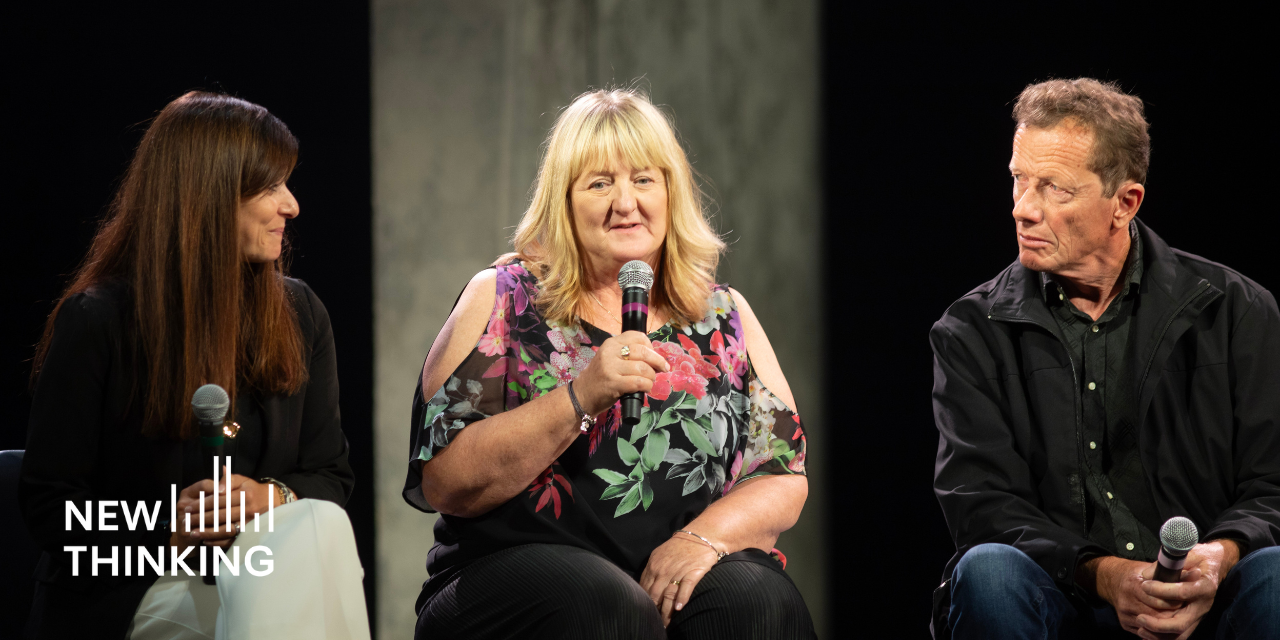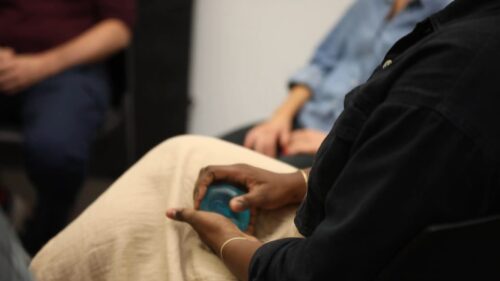Sarah Schweig of the Center for Court Innovation talked with Roxann Pais Cotroneo, the city attorney of Harlingen, Texas about efforts to launch a community court for youth offenders. The Youth Community Court, which covers the entire city of Harlingen, currently meets twice per month in the municipal court building, before a municipal court judge who hears the youth docket. The court will soon move to a newly renovated building, Harlingen’s old courthouse, which will also house service providers. The Center for Court Innovation last spoke with Roxann Pais Cotroneo when she was the Dallas City Attorney’s chief of community prosecution and community courts. Here, she talks about her experiences as city attorney in Harlingen and about how the city started a community court on a shoe-string budget.
Harlingen seems like an interesting place—a non-affluent city bordering Mexico and close to the Gulf; what do you think is one of the most distinguishing features about the area? What kinds of challenges are you facing that may be unique to Harlingen?
I think our youth in general need to be protected because there’s real drug cartel violence going on 20 miles down the street. The cartels are fighting each other and the Mexican army, and there are thousands of people being killed.
A lot of these drug cartels will come across the border into our country for ammunition and for guns and for cars. And a lot of them, when they come over, will seek recruits. The good thing is that a couple years ago in Harlingen the police department started a gang unit. They had gang prevention officers, and they had probation officers that were community probation officers that rode along with the cops specifically geared towards gangs. That, certainly, I think is unique.
The Harlingen Youth Community Court focuses specifically on problem-solving justice for juveniles. Could you explain who qualifies for the new community court?
As the city attorney I have jurisdiction in Texas over what we call Class C misdemeanors. Those are offenses that are punishable by fines only, including traffic and non-traffic offenses. Traffic tickets are automatically heard by the judge. The non-traffic offenses are things like minor possession of alcohol, minor possession of tobacco, disorderly conduct, simple assault, minor curfew violation, disrupting classes, theft under $50. Since I consider those problematic behavioral issues, those youths who are charged with non-traffic offenses are the ones I see as a prosecutor.
The youths can be from 13 to 21 years old. If they plead guilty, I want them to perform community service, and I want them to get social services. The Youth Community Court doesn’t have a designated case manager; I play that role myself, and so I pulled together resources that I knew existed in the city.
What had been the traditional response to these cases before the Youth Community Court opened?
They would just be required to pay a fine, and it would go on their criminal records, which is a really big thing because in Texas once you reach 17 you’re considered an adult. So if you’ve got theft under $50, and you’re 17, that stays with you forever. In community court, they’re placed on a probationary program where if they complete these conditions the case is dismissed. That’s the biggest difference. Before, all they could do was just pay the fines. And the reality was the parents were paying the fines not the kids, so that wasn’t solving anything.
What kinds of programs and services does the court offer juveniles?
We have a college in our town called Texas State Technical College, so I called the recruitment office and said, “I’m going to have youths that are coming to our municipal court, and a lot of them are college-aged. I’d like to see if a recruitment person can come to our courtroom and meet with our kids so they can learn about the educational opportunities here at home.” It’s a recruitment officer’s duty to recruit students and we’re saying, “Hey, we’ve got a batch here for you, come get it.” Why couldn’t other people around the country do that?
Then I said, “Alright, what else do we have?” Most cities across the country have a social service department; we don’t. But we did provide city funding to the Boys and Girls Club, and I thought, “Well, I’m going to call the Boys and Girls Club to see if one of their counselors could come to court so that when we order kids to perform community service they can go to the Boys and Girls Club and see what programs are available for them there.” Sure enough, the Boys and Girls Club counselors come. They’ve got classes called Money Matters, which is a good class for someone who’s committed theft under $50. They’ve got classes about anger management, which is good for people with assault cases. They have all kinds of extracurricular activities to help get kids involved and meet new people, and they also get community service credit for participating in these classes.
Then I said, “Ok, what’s next? The gang unit: they’ve got the probation officers, so I guess I could call and see if those probation officers will come to court. We’ll send them a docket in advance of who the youth defendants are, and they can tell us who the gang members are. So, rather than having these gang members go pick up trash, I’m going to have them go through the gang member prevention program.”
We also have an organization called Substance Abuse Services of South Texas that provides HIV services and drug counseling services, and so our community court has access to drug screening and drug testing. Substance Abuse Services of South Texas also has positive action programs where it provides group counseling, family counseling, and individual counseling to youth in need of behavioral changes. They received a grant on their own. They had no idea the community court existed until after the grant was awarded to them, but they were interested in connecting with new clients. Now I have therapists and counselors licensed in drug treatment in the courtroom. They meet with the kids and set them up with a 90-day program to try to get them off drugs.
There’s another organization called the Turning Point, and it’s certified by the state to provide alcohol awareness classes and tobacco awareness classes.
So, rather than having a social service coordinator, these organizations have representatives at a table outside the courtroom. After they see the judge, the youths immediately go see the service provider that they were court-ordered to see, and the service provider gets them signed up and gives them details about what they’re going to do next.
When we move into our new facility we will have the Work Force Commission, which is the state employment agency. We’ll also have another organization offering high school equivalency classes, and we’ll have another organization called Youth Build that teaches construction skills. They build homes while they’re learning construction skills, so all these dilapidated, substandard structures that the city is demolishing get built up with homes by the kids. Eventually our new building will be fixed to have bed cots for homeless youths, but that’s a little further down the road.
Tell us more about the community service options for juvenile offenders.
They can do cleanup work at the Harlingen Humane Society. They can do work at our City of Harlingen Recycling Center. We also have an organization called Harlingen Proud, and they are the ones that do the monthly neighborhood cleanups. Our city has also recruited Bass Pro to Harlingen. They are going to provide conservation educational community service opportunities to our Youth Community Court defendants. Before we send these kids out to pick up trash we really try to get them into the services. This is not about them picking up trash. This is about showing them what else there is.
Is Harlingen planning on expanding the Youth Community Court to include adults? How would this work?
Right now, I think we’re going to concentrate on youths, but looking ahead, there are a lot of veterans in this valley—it’s a very patriotic community—and I know there is a veterans community court mentioned in A Tale of Three Cities: Drugs, Courts and Community Justice; I can certainly see something like that working really well here before it would be a full adult court. But right now we’re just going to focus on the Youth Community Court and build that up as much as possible.
How has the Harlingen community been involved in planning the court, and what role can you imagine for the Harlingen community going forward?
It was almost as if I just got dropped into the middle of a world that said, “Help! Our youth are in trouble.” It was a general outcry.
I thought, “Let me do a presentation to the city commission.” Then I went to the Rotary Club of Harlingen, and to a couple of other community meetings. They all seemed pretty responsive to the idea, but I was promoting the idea of hiring a social service coordinator and a community service coordinator. They thought that was great, but there was no money.
When I kept seeing all these newspaper articles with all these kids in trouble, I thought, “We’re just going to make it happen.” That’s when I said, “I’ll be the community service coordinator, and I’ll be the social service coordinator, and I’m going to call whoever I can find.”
Has the court settled on performance metrics to track success?
It’s as grassroots as possible: How many kids received court orders? How many successfully completed their probationary terms? We’ll also track how many community service hours were required and how many were actually completed. We’re not doing anything fancy because we don’t have the manpower to do it, but we need to show some success to get hopefully monetary buy-ins.
Given the current economic climate, there may be other communities that are interested in creating community courts, but find their hands tied financially. How do you suggest they follow your advice by “keeping it basic”?
Look for social service providers who are operating and say, “Do you want to come here? We have no money, but we have people in need and you need clients. Come one come all!”
We say, “Can we help connect you to new clients? Do you want to have a memorandum of understanding?” And it’s instant.
How has your experience of community prosecution in Harlingen differed from your experience in Dallas?
Having gone from a population of 1.5 million to a jurisdiction of 75,000 has been easy. Some of my old community prosecution neighborhoods [in Dallas] had 75,000 people, so I can manage a program here like the back of my hand.
Our community prosecution program and community court in Dallas flourished rapidly. Everyone always asked, “Roxann, how does Dallas do it?” I’m going to give you the formula: it’s one third plus one third plus one third equals 110 percent. One third of your time has to be devoted to being a community prosecutor. Another one third has to be marketing your successes, bragging about what your office did. And the final one third of the time is spent looking for money. But here, we didn’t have any money.
How has your experience building a program in Harlingen differed from your experience in Dallas?
Dallas is a very rich and progressive city. There are obviously very poor neighborhoods there, and those are the neighborhoods we helped. But to do the same thing in one of the most impoverished communities of our United States—I’m shocked by it. And it has nothing to do with me. It has everything to do with the people here.
I want Harlingen to become a leadership site. We are facing some unique challenges that other communities will never have to face because of the border violence. They say if you can live in New York, you can live anywhere. Well, if you can build a community court in Harlingen, you can do it anywhere.
If there is a theme to this effort it’s that you can build a community court without a lot of money by keeping it basic—looking at what you have and pulling the services together—just connecting the dots. I hope this story in some way inspires people, because we had some money in Dallas, but we had no money here. But we have a lot of people with a lot of heart. We were going to do it, and now we’re doing it. That’s the real story.
March 2011


